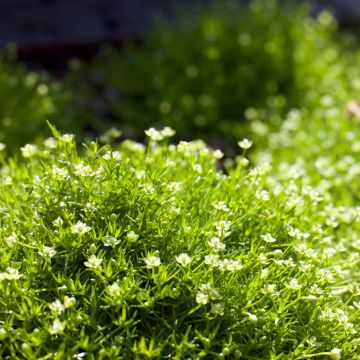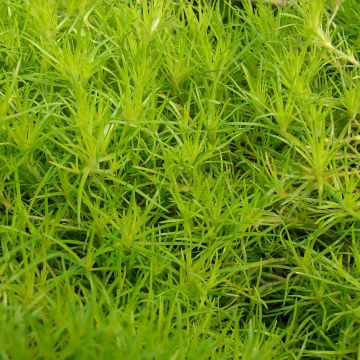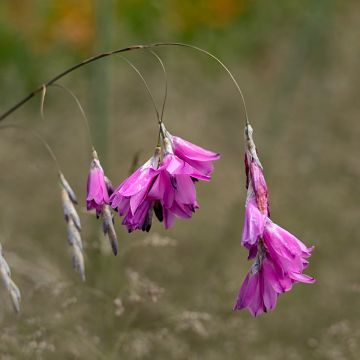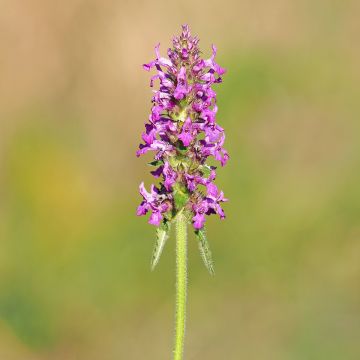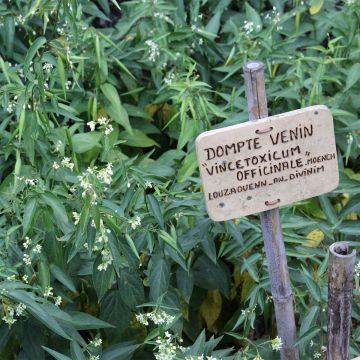

Sagina subulata


Sagina subulata


Sagina subulata
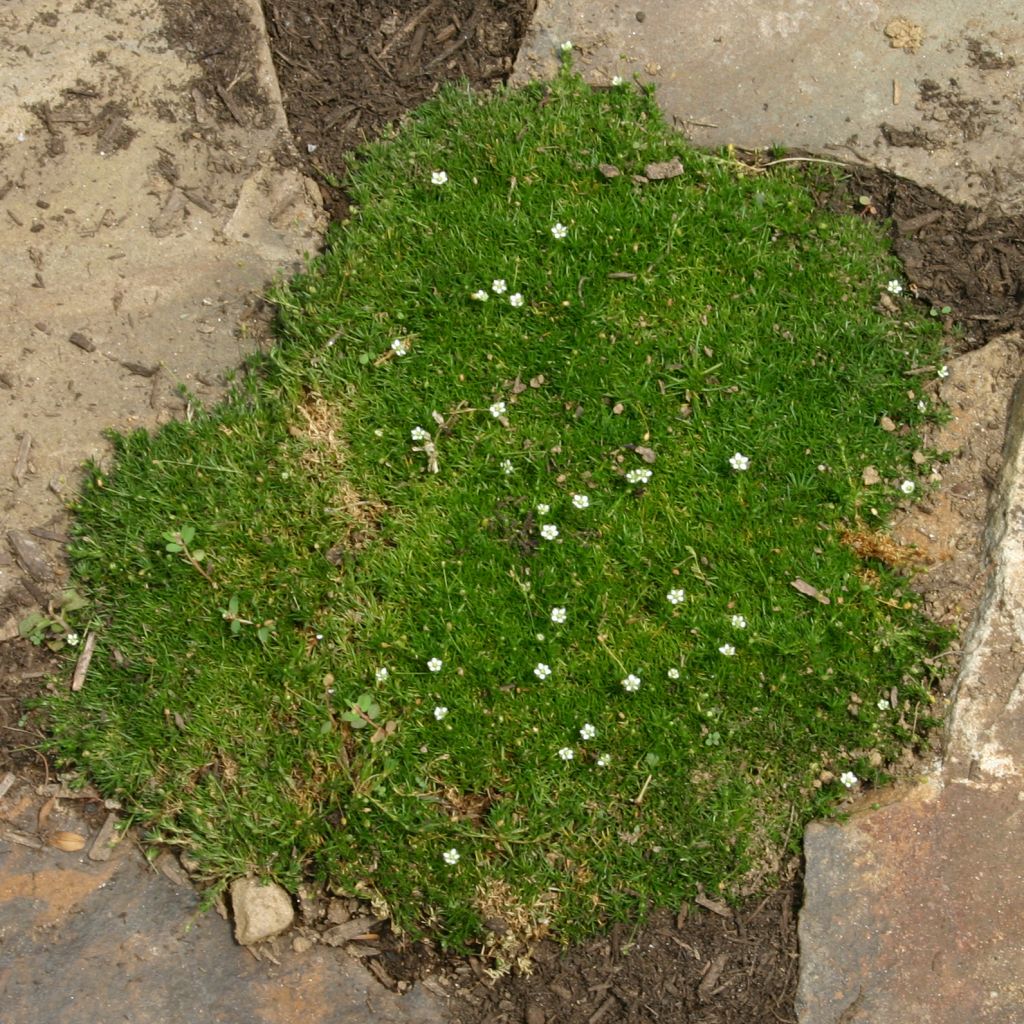

Sagina subulata
Sagina subulata
Sagina subulata
Heath Pearlwort, Irish-Moss
This item cannot be shipped to the selected country
Delivery charge from €5.90
Delivery charge from €5.90
More information
Schedule delivery date,
and select date in basket
This plant carries a 12 months recovery warranty
More information
We guarantee the quality of our plants for a full growing cycle, and will replace at our expense any plant that fails to recover under normal climatic and planting conditions.
From €5.90 for pickup delivery and €6.90 for home delivery
Express home delivery from €8.90.
From €5.90 for pickup delivery and €6.90 for home delivery
Express home delivery from €8.90.
Does this plant fit my garden?
Set up your Plantfit profile →
Description
Sagina subulata, known as Heath Pearlwort, forms a very low, dense carpet reminiscent of moss, spreading by rooting in place, and covering itself with tiny white flowers in late spring. This evergreen perennial works wonders in rock gardens, in the gaps between paving stones and walls, in moist but well-drained soil, in full sun or partial shade.
Sagina subulata belongs to the Caryophyllaceae family, like the twenty or so species that make up the genus. It is a small perennial plant native to Western Europe and temperate regions of the Northern Hemisphere. This plant with running roots forms a low, dark green, evergreen carpet, 3 to 5cm (1 to 2in) tall, colonizing the ground by rooting tiny, stoloniferous and branched stems that are 1 cm (1in) long, eventually forming dense cushions over 25cm (10in) in diameter. Its growth is quite slow. In late spring, from May to June, the carpet is covered in tiny white flowers, 4mm (1in) in diameter.
This 'carpet plant' has the advantage of being able to cover an area where grass does not grow well, thanks to its running roots. It grows to form a uniform carpet that does not need to be mowed, tolerates wet soils, and for these reasons, knawel is often used as a substitute for grass. However, it does not tolerate heavy foot traffic well. It is also a popular species for use in mosaic gardening, commonly used in rock gardens, like baby's tears, or to fill the gaps between large paving stones and walls. It is also welcome in Japanese-inspired gardens. Paired with hostas, ferns, or used as a backdrop for a bed of fuchsias, it will be truly charming. It should be noted that subulate pearlwort does not tolerate dry or hot conditions, so it is best reserved for cool and shaded areas.
Report an error about the product description
Sagina subulata in pictures






Flowering
Foliage
Plant habit
Botanical data
Sagina
subulata
Caryophyllaceae
Heath Pearlwort, Irish-Moss
Cultivar or hybrid
Other Sagina
Planting and care
Sagina subulata is planted, preferably in spring, in a light, humus-rich soil that remains moist, well-tilled, possibly mixed with coarse sand for drainage, and free of weeds. Install at least 8 plants per square meter. Choose a semi-shaded location, at least during the hottest hours of the day. A sunny exposure is acceptable in a cool climate, even in summer. Water regularly during the summer.
Planting period
Intended location
Care
-
, onOrder confirmed
Reply from on Promesse de fleurs
Summer flowering perennials
Haven't found what you were looking for?
Hardiness is the lowest winter temperature a plant can endure without suffering serious damage or even dying. However, hardiness is affected by location (a sheltered area, such as a patio), protection (winter cover) and soil type (hardiness is improved by well-drained soil).

Photo Sharing Terms & Conditions
In order to encourage gardeners to interact and share their experiences, Promesse de fleurs offers various media enabling content to be uploaded onto its Site - in particular via the ‘Photo sharing’ module.
The User agrees to refrain from:
- Posting any content that is illegal, prejudicial, insulting, racist, inciteful to hatred, revisionist, contrary to public decency, that infringes on privacy or on the privacy rights of third parties, in particular the publicity rights of persons and goods, intellectual property rights, or the right to privacy.
- Submitting content on behalf of a third party;
- Impersonate the identity of a third party and/or publish any personal information about a third party;
In general, the User undertakes to refrain from any unethical behaviour.
All Content (in particular text, comments, files, images, photos, videos, creative works, etc.), which may be subject to property or intellectual property rights, image or other private rights, shall remain the property of the User, subject to the limited rights granted by the terms of the licence granted by Promesse de fleurs as stated below. Users are at liberty to publish or not to publish such Content on the Site, notably via the ‘Photo Sharing’ facility, and accept that this Content shall be made public and freely accessible, notably on the Internet.
Users further acknowledge, undertake to have ,and guarantee that they hold all necessary rights and permissions to publish such material on the Site, in particular with regard to the legislation in force pertaining to any privacy, property, intellectual property, image, or contractual rights, or rights of any other nature. By publishing such Content on the Site, Users acknowledge accepting full liability as publishers of the Content within the meaning of the law, and grant Promesse de fleurs, free of charge, an inclusive, worldwide licence for the said Content for the entire duration of its publication, including all reproduction, representation, up/downloading, displaying, performing, transmission, and storage rights.
Users also grant permission for their name to be linked to the Content and accept that this link may not always be made available.
By engaging in posting material, Users consent to their Content becoming automatically accessible on the Internet, in particular on other sites and/or blogs and/or web pages of the Promesse de fleurs site, including in particular social pages and the Promesse de fleurs catalogue.
Users may secure the removal of entrusted content free of charge by issuing a simple request via our contact form.
The flowering period indicated on our website applies to countries and regions located in USDA zone 8 (France, the United Kingdom, Ireland, the Netherlands, etc.)
It will vary according to where you live:
- In zones 9 to 10 (Italy, Spain, Greece, etc.), flowering will occur about 2 to 4 weeks earlier.
- In zones 6 to 7 (Germany, Poland, Slovenia, and lower mountainous regions), flowering will be delayed by 2 to 3 weeks.
- In zone 5 (Central Europe, Scandinavia), blooming will be delayed by 3 to 5 weeks.
In temperate climates, pruning of spring-flowering shrubs (forsythia, spireas, etc.) should be done just after flowering.
Pruning of summer-flowering shrubs (Indian Lilac, Perovskia, etc.) can be done in winter or spring.
In cold regions as well as with frost-sensitive plants, avoid pruning too early when severe frosts may still occur.
The planting period indicated on our website applies to countries and regions located in USDA zone 8 (France, United Kingdom, Ireland, Netherlands).
It will vary according to where you live:
- In Mediterranean zones (Marseille, Madrid, Milan, etc.), autumn and winter are the best planting periods.
- In continental zones (Strasbourg, Munich, Vienna, etc.), delay planting by 2 to 3 weeks in spring and bring it forward by 2 to 4 weeks in autumn.
- In mountainous regions (the Alps, Pyrenees, Carpathians, etc.), it is best to plant in late spring (May-June) or late summer (August-September).
The harvesting period indicated on our website applies to countries and regions in USDA zone 8 (France, England, Ireland, the Netherlands).
In colder areas (Scandinavia, Poland, Austria...) fruit and vegetable harvests are likely to be delayed by 3-4 weeks.
In warmer areas (Italy, Spain, Greece, etc.), harvesting will probably take place earlier, depending on weather conditions.
The sowing periods indicated on our website apply to countries and regions within USDA Zone 8 (France, UK, Ireland, Netherlands).
In colder areas (Scandinavia, Poland, Austria...), delay any outdoor sowing by 3-4 weeks, or sow under glass.
In warmer climes (Italy, Spain, Greece, etc.), bring outdoor sowing forward by a few weeks.

































